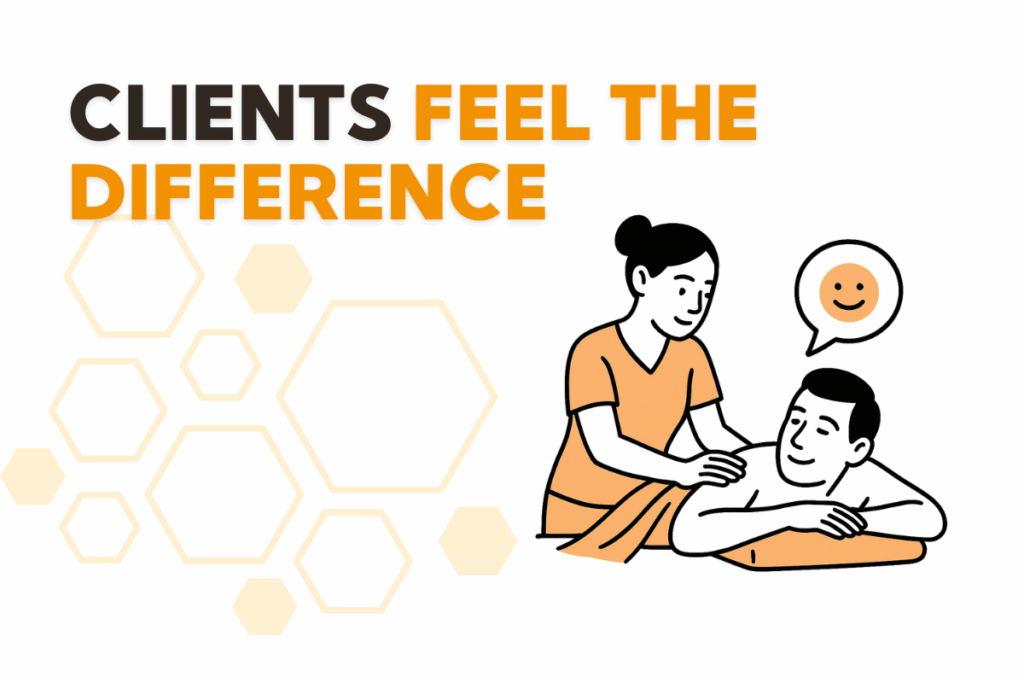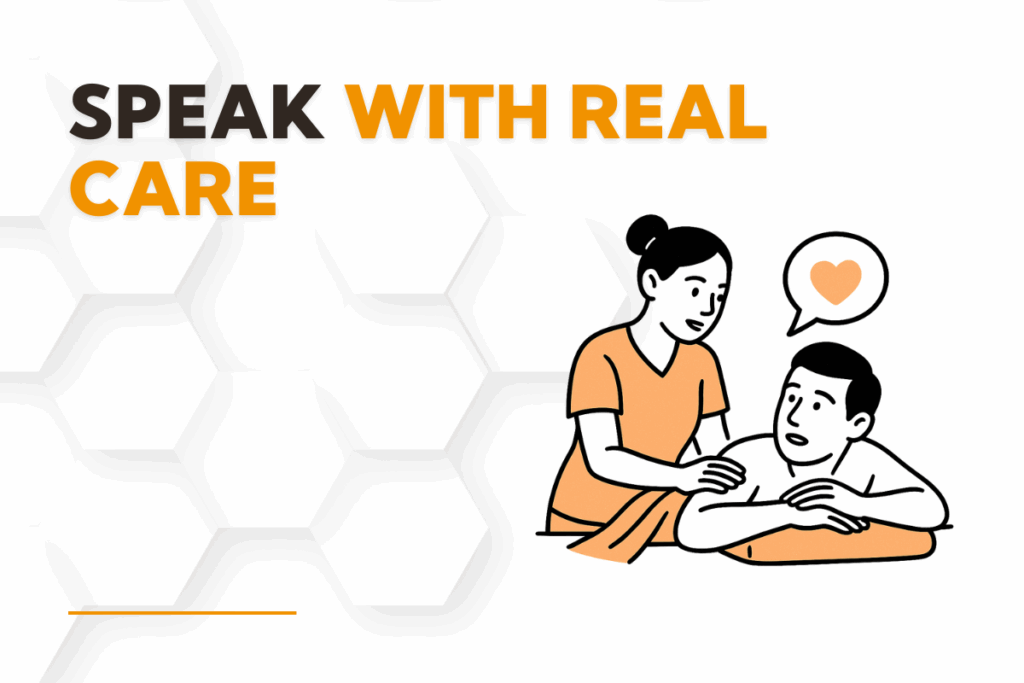Your clients aren’t just booking massage—they’re seeking connection, clarity, and care that feels personal. And when your responses sound templated or vague, they notice. More than ever, clients expect real answers—ones that reflect their concerns, their bodies, and their experience with you.
The Hidden Cost of Canned Responses in a Client-Centered Practice
When efficiency overrides empathy
Imagine this: a long-time client texts after their appointment. “Is it normal that my hip feels tighter today?” You glance at the message between back-to-back sessions and fire off, “Yes, that’s common after deep tissue. Drink water.” It’s technically true—but it doesn’t answer their question. And the next time they have a concern, they might not ask.
Generic responses often stem from exhaustion, time pressure, or a fear of saying the wrong thing. But in a profession built on trust and human connection, copy-paste answers can quietly chip away at client relationships.
Why today’s clients are harder to impress
We’re living in a world of instant information. Clients Google everything before they even walk in your door. They know the basics—but they want your expertise, not a Wikipedia summary. And if they feel like you’re repeating stock phrases, they’ll start to question whether you really understand what’s happening in their body.
The Therapist’s Challenge: Be Efficient Without Feeling Robotic
A delicate balance in daily operations
Running a massage clinic means juggling dozens of responsibilities: client care, staff coordination, billing, scheduling, and more. It’s easy to fall into patterns of fast, templated replies—especially when you’re trying to stay on top of your day.
But speed without presence often results in unclear or unsatisfying communication.
What therapists in the Hivecommunity are saying
We’ve heard from many practitioners: “I want to offer thoughtful answers, but I don’t have time to type them out every time.” That’s real. So the question becomes: how do you maintain personalization without rewriting the wheel for every message?

How to Make Every Message Feel Personal—Without Writing a Novel
Start with empathy, not instruction
Even a short message can feel warm and authentic. Instead of, “It’s normal,” try:
“That tightness makes sense after the release work we did—especially in your hips. It should ease up by tomorrow. Let’s keep an eye on it.”
Rewrite your most common replies in your own voice
Rather than pre-written templates, create message frameworks that sound like you. Write down the top five questions clients ask and draft replies that reflect your tone, phrasing, and real-life advice.
When in doubt, invite a conversation
Sometimes, texting back and forth creates more confusion. Try this:
“That’s a great question—I want to give you a full answer. Want to hop on a quick call or chat before your next session?”
That small shift can build massive trust.
Create Systems That Still Feel Human
Use simple frameworks with room to breathe
Think of your responses as modular—like Lego bricks. Have a few go-to phrases for acknowledgment, basic education, and next steps. Then swap in specifics from the session.
Example:
- Start: “That sounds uncomfortable, and I can see why you’re wondering.”
- Middle: “Given the fascial work we did on your quads…”
- End: “Let’s recheck that next visit—I’ll adjust your treatment if needed.”
Let intake forms guide follow-up
If you’re using an online intake form for massage therapy clients (Hivemanager.io), you already have a starting point for personalized responses. Pull from their stated goals, medical history, and areas of focus to respond in a way that feels relevant to them, not just “someone.”

Use Tech Tools That Support Better Conversations
Automation doesn’t have to mean impersonal
Reminders, confirmations, and scheduling tools free up your time—so you can be more present when it counts. With tools like automated client messaging and follow-up reminders, you can keep communication flowing without losing your personal touch.
Consider how business automation for massage therapy clinics (Hivemanager.io) helps create space to respond with presence instead of pressure.
Empower your team to communicate like you
If you have multiple therapists or front desk staff, create a shared tone guide. Include:
- Common questions and how you would answer them
- Phrasing do’s and don’ts (e.g., avoid “should be fine”)
- When to escalate to a therapist response
What Happens When You Get It Right
Clients feel seen—and they come back
When your clients feel like you actually get them, they’re more likely to rebook, refer friends, and stay loyal—even if they find a cheaper option down the street. It’s not just about technique. It’s about how you make them feel between treatments, too.
Therapists stay grounded and connected
You didn’t become a therapist to write emails and DMs all day. But when your messages feel real, honest, and yours, the work feels lighter—and the relationship with your clients gets stronger.
FAQs
Use short frameworks that include a quick validation, a reference to their treatment, and one next step. Pre-write these in your voice so they’re easy to drop in when needed.
Not if you write them in your own tone and leave room for client-specific details. Think of them as support—not replacements—for your real voice.
Create a response guide with examples of how you would answer common questions. Focus on tone, warmth, and client-specific language. Encourage your team to pause before hitting send.
Absolutely. Tools like automated reminders or post-treatment check-ins can be written with empathy and intention—saving you time while still sounding like you.


